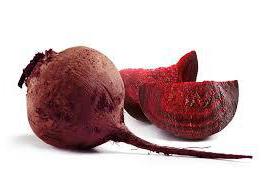How long can you store carrot juice? Carrot juice. How to make beetroot juice at home.
Freshly squeezed berry, vegetable or fruit juice is a very tasty and healthy drink. Natural juice, which is sold in supermarkets, is also useful, but it contains additives (stabilizers, flavor enhancers, etc.), so this product is not only healthy, but also harmful. So if you really want to benefit your body, do not be lazy and make juices with your own hands. And we will tell you whether it is possible to store freshly squeezed juice at home.
Freshly squeezed juices: storage
There is one major disadvantage with centrifugal force: the friction of the force accelerates the juice faster, which is detrimental to flavor and color. You will also find that the profitability of these machines is less than that of a champion-style competitor. Competition juicers are workhorses. Food is fed into the chute on a serrated rotating blade. As fruits and vegetables pass through the blades, the cell walls rupture, releasing their contents, which quickly collect in the bowl. These instruments are excellent at separating solids from liquids: the pulp is discarded into a separate waste vessel.
How to store freshly squeezed juice
It is important to know and understand that most of the nutrients are found in freshly squeezed juice, so this product is not intended for long storage. But still there are situations (for example, there is too much juice or you use it for medicinal purposes) when it is necessary to store the juice for a short period of time.
How to take carrot juice correctly
Champion style juicers are also ideal for juicing relatively dry foods like wheatgrass or leafy greens that can be difficult for other machines to grind. The main downside to this style of juicer is that the pulp still retains liquid, which lowers the overall yield.
Food presses or cold-pressed juicers forcibly expel liquids by squeezing food between two hard, unstable surfaces, one of which is perforated. These machines, which theoretically sound like a medieval torture device for fruits and vegetables, are often preferred by serious juicers because they use less heat. Juice presses are great for softer foods, or foods that have been softened with sugar, enzymes, or a little heat.
Store freshly squeezed juice in the refrigerator in a tightly sealed container. Storage containers can be any - plastic, glass, ceramics, as long as it is closed. Not intended for storage Apple juice. This drink contains a lot of iron, which begins to oxidize upon contact with air. To slow down the oxidation process a little, you can add lemon juice to freshly squeezed apple juice, as a result, the drink will remain light.
In some presses, including cider, the food is placed between flat plates, often between several layers of plates. Citrus fruit presses adapt citrus shapes using convex and concave pressing surfaces. Muscle energy stimulates the juicer, resulting in a variation in juice yield depending on the user. If you enjoy pulp in juice, be careful - your juice will contain fewer particles because the food is compressed rather than torn or crushed.
It's easy, but yes, it takes time! These tips and tricks will help make this an enjoyable and smooth process for you. Not sure what to do with this lemon? Before you make a trip to the store or market, make your grocery list so you know exactly how many fruits and vegetables to buy. Save time. Prepare your fruits and vegetables the night before if you're planning on making your morning juice by choosing the ingredients for your juice, washing the product, placing them in a storage container in the fridge, and assembling the juicer in your kitchen so it's ready to go. Now start juices. Wash, cut and juice! Follow the next steps to make your juice and start flooding your body with nutrients from all fruits and vegetables. Washed foods can be contaminated with bacteria, so this is an important step in the juicing process. If you have a juicer with a pulp basket, place it on top of a plastic bag for easy cleaning. Before drinking your juice, cut out any food that might be too big to fit in the juicer. Once you start cutting vegetables, they start to lose nutrients, so it's best to cut before the juice, but if you really need to save on time, you can add this step to your preparation. Feed is produced through a juicer. If your juicer has more than one speed, be sure to shift from high to low for softer fruit. Most juicers come with a chart in their owner's manual to help you get up and running. If so, run it back through the juicer and you can get more juice out of the leftovers! Drink some juice too. At this point, you should have fresh juice ready to drink! Drink it as soon as possible, because after its juice, it starts to lose nutrition overtime. If you store it properly, it can last up to 2 days, but remember that there are no preservatives in fresh juice so it can go bad quickly. If you prefer cold, add ice. Now it's time to clean the juicer. Wipe the machine gently with warm water and soap and place on a drying mat. Check your user manual to make sure your juicer is dishwasher-friendly for even cleaner cleaning. Make more than one juice, get half right away, and then save the rest for your juice later in the day or the next day. Store your juices in airtight glass containers for best results. Fill container full. Pour the juice into the top of your preferred container to prevent oxygen from entering the body, which can deplete nutrients. Freezing. Freezing is also an option, but less desirable than refrigeration. If you are freezing your juice, do it right after the juice. Thaw in refrigerator and drink within 7-10 days of freezing. Store in the right environment. Juice should be stored in a dark cool environment away from heat and light.
- Choose your juicer.
- Contact us to purchase a juicer that is right for you.
- Prepare your grocery list.
- Or use our juice recipe to help make the list.
- Rinse thoroughly.
- Level the pulp basket of your juicer.
- Cut or tear foods to fit into the juicer.
- Make a double batch.
- If you are traveling, bring juice to the refrigerator.
- Store in an airtight container.
If you did not drink the drink on time, then it is better to sterilize it later. To do this, pour the juice into a saucepan, add a little sugar and boil for 5 minutes. If you sterilize tomato juice, then for taste, you can add 2 black peppercorns and a bay leaf to it.
Freshly squeezed juice can also be stored frozen. To do this, pour it into containers or into plastic cups and put in the freezer. In this case, the storage container should not be completely filled, since the liquid tends to increase in volume when frozen. Otherwise, the container for storing juice may break.
Cooking can make any regular juice intake more affordable. So what happens when we make them ahead of time? Storing juices can be juicer saving finesse. Work commitments, travel, personal situations, and busy schedules are all barriers to drinking fresh juices immediately.
Being able to make them well in advance in preparation for those busy periods can be the only way, with which you can quickly take over the juice or even get the opportunity to receive them regularly. The best tactic is to know how to store them to minimize possible nutrient degradation.
Before use, frozen juice should be put in warm water or left at room temperature.
A huge plus of freezing is that this method of storage allows you to keep freshly squeezed juice in its original form, that is, along with all the vitamins and other useful substances. However, freshly squeezed juice should be frozen immediately after preparation.
Fill your juice as full as possible to reduce oxygen exposure in the container. Adding a piece of citrus fruit such as lemon, lime or grapefruit can help reduce nutrient loss by boosting the vitamin C, citric acid and other antioxidants in your juice. Keep your juices always in a dark cool place when traveling, it is recommended to use a cooler with ice bags to reduce the loss of nutrients.
- Store your juices in airtight glass containers.
- Store your juices immediately after preparation.
How long to keep freshly squeezed juice
Freshly squeezed juice is not intended for storage. However, it is acceptable to store such juice in the refrigerator for 2-3 hours. But even during this time, the drink will lose most of its nutrients. If you need to keep the juice for a longer period of time, then it is better to freeze the drink immediately. Frozen juice can be stored for 1-2 months and still retain all of its beneficial features.
If you are freezing, it is recommended not to fill them on the right to allow room for expansion. Leave at least ½ inch at the top. When thawed, it is recommended to thaw them in the refrigerator and drink immediately. The process that causes apples to quickly turn into Brown color, is known as oxidation, which is simply the reaction of compounds that are exposed to oxygen. Juice is even more susceptible to oxidation because when fruits and vegetables are juiced, the product's cell walls break down, allowing nutrients to be exposed to air, heat, and light, and over time, these factors will contribute to nutrient degeneration.
Other site materials
Juice from fruits and vegetables is a valuable product that contains many essential vitamins, microelements and other useful substances. Juices are not only a wonderfully tasting thirst quencher, but also a tonic that can restore or strengthen the body. To date, even a whole science in this direction has appeared - juice therapy. Beetroot juice is widely studied by scientists and specialists, as it has very strong medicinal properties. Therefore, the beneficial properties and contraindications that it carries should be known to everyone.
Fresh orange juice - a gift from China
The longer the juice sits, the more the juice's nutrients will be oxidized and damaged. The juice will also appear dull and dark in color from increased nutrient loss and oxidation. There is also a risk of unhealthy bacterial growth in your juice if it is stored in the refrigerator for too long, which can cause stomach upset.
- Your nutrient loss in your juice will be high.
- The flavor will also change and this can be quite unpleasant.
A bit of product history
Beetroot juice is obtained from the root crop of the same name, which is called beetroot. But there are other names for this root crop. For example, in some regions of Russia, in Ukraine, Belarus, it is called bulak or beetroot.
India is considered the birthplace of this plant. Mankind began to grow beets even before our era. And at first, only the leaves of the plant were used for food, and over time, root crops. The ancient Greeks were the first to use the fruits for medicinal purposes. To date, there are about 15 species of this root crop, and it is grown on all continents. The most famous are the common, fodder, sugar and table beets. Beetroot juice is made from red beets.
How and how much to store carrot juice
She has over 14 years of clinical experience related to liver disease, autoimmune disease, thyroid conditions, diabetes, insulin resistance, digestive disorders, chronic infections, child health, fertility, and pregnancy care. Claire has worked closely for many years with Dr. Sandra Cabot, who is known as the Liver Cleanser and has written over 25 health-related books.
Claire writes health-related articles, creates healthy recipes, and is one of the nutritionists who runs ours. Beetroot juice is packed with calcium, iron, and potassium, making it a great addition to your juice regimen. Always store beetroot juice - and any other freshly made juice - in the refrigerator to prevent the growth of potentially harmful bacteria. By maintaining beetroot juice properly, you can still drink it up to 48 hours after it's made.
Composition and calories
Fresh beetroot juice just filled with many healing substances. A feature of the drink is the absolute absence of fat. Proteins in the product 1%, carbohydrates - 10%.
Beetroot juice is saturated with a huge amount of vitamins: groups B, C, PP, thiamine, riboflavin. It also contains important micro and macro elements: sodium, potassium, magnesium, iron, iodine, chlorine, manganese. But according to scientists, the key component that gives the drink medicinal properties are considered nitrites. These substances nourish and are responsible for building cells.
Store any unused beet juice in the refrigerator shortly after making it to keep it safe. Juice loses its nutritional value quickly and is best used shortly after it is made, but you can store it for up to two days. Use a glass container with a tight lid to store your juice and, if possible, fill the container to the top to minimize exposure of the juice to air. If beetroot juice has been sitting for more than two hours, throw it away. Do not drink beetroot juice on its own, as this can cause a sore throat.
The calorie content of 100 grams of such a drink is 42 calories.
Beetroot juice is useful:
- with atherosclerosis and heart disease;
- with hypothyroidism, as it contains a large amount of iodine;
- with blood problems - increases the number of red blood cells;
- during menstruation helps to reduce pain;
- cleanses and affects the metabolism in the liver;
- cleanses the body of toxins and toxins, effective for constipation;
- with obesity or overweight;
- with hypertension, it reduces pressure and improves the elasticity of blood vessels;
- with colds and viral diseases, it increases resistance to viruses and stimulates the lymphatic system;
- gives the face a lively, natural complexion and is able to rejuvenate the skin.
 The benefits of beetroot juice in oncology have been proven. Doctors recommend drinking 100 ml of liquid before meals. And for skin diseases, it is best to make a bandage based on the product.
The benefits of beetroot juice in oncology have been proven. Doctors recommend drinking 100 ml of liquid before meals. And for skin diseases, it is best to make a bandage based on the product.
Treatment with this product is effective not only when taken orally. Beetroot juice is a wonderful, and most importantly, effective remedy for treating a throat, instillation into the nose with sinusitis, or with chronic rhinitis.
This tool will help restore energy and strength, as well as improve the functioning of the nervous system, increase endurance and revitalize appearance. Effective beetroot juice for newborns with constipation. But up to 4-5 months without special need, it should not be given to a child.
Juice during pregnancy is incredibly useful because it improves intestinal motility in expectant mothers and helps fight excess weight. And it is also an excellent tool in the prevention of anemia. Pregnant women are recommended to drink beet-carrot fresh (1: 2) every day to increase hemoglobin. Can be mixed with apple, pumpkin or carrot juices.
How to drink juice?
Questions such as the following are constantly popping up on the Internet:
- how to make beetroot juice
- how to drink beetroot juice
- can you drink pure juice?
- How long can you keep beetroot juice in the refrigerator?
Let's try to figure it out and give answers to these questions.
In order to prepare beetroot juice, you need roots of a bright red hue, without light streaks and better elongated shape. After that, you need to remove the tops and the upper part of the root crop, and squeeze the juice with a juicer. But if you don’t have a juicer, you can grate the root vegetables and squeeze the juice with gauze.
Speaking about the benefits and harms of beetroot juice, it must be said that you should not drink juice right away. This remedy will be more useful if taken not immediately after squeezing, but after a few hours. The thing is that a freshly squeezed drink has harmful essential oils, which, interacting with oxygen, volatilize. It is necessary to place it in the refrigerator in an open container for 3-4 hours, the formed foam disappears during this time and it becomes ready for use. It is also not advised to drink the sediment from the juice.
This freshly squeezed product can be stored in the refrigerator for no more than two days. And for long-term storage, juice can be pasteurized, rolled up in jars and stored in a cool place. But it is up to you to decide, since beet root crops can be stored until a new harvest and you can always make fresh juice.
But not everyone likes the taste of beet juice, so we recommend mixing it with other juices: pomegranate, apple, carrot, etc. These fruits and vegetables not only improve the taste of fresh juice, but also enhance the usefulness of beetroot juice.
At first, making such a cocktail, you should start with a ratio of 1:10 (20 ml of beet juice, 200 ml of carrot juice). And over time, you can increase the proportion to the one that you personally need.
Treatment with beetroot juice
Today, in folk medicine, there are many recipes on how and what can be treated with beet juice.
For diseases of the liver, gallbladder, heart, with hypertension, you can prepare the following recipe:
- 300 ml carrot, 100 ml cucumber and 100 ml beetroot juice.
- Mix and divide into several portions.
- Drink 500 ml for half a month every day.
But if discomfort arises from the use of such a recipe, then it is worth reducing the part of beetroot juice, since it has a very active effect on the body.
With hypertension, a mixture of honey and beet juice 1: 1 will help. Such a drink should be taken 100 ml per day in 3-4 doses for five days.
The recipe for gargling with beetroot juice is effective for sore throats. To treat sore throats with beetroot juice, you need to prepare a tincture:
- grate raw beets;
- add one tablespoon of vinegar to this mass;
- let it brew for several hours;
- Squeeze the mixture with gauze and gargle.
Beetroot juice for a runny nose in children or problems with adenoids. It is necessary to prepare a mixture of honey and juice in a ratio of 1: 2 and instill a few drops in the nose for a week. And if, together with drops, rinse the nasopharynx with saline solution (1 tablespoon of salt per 250 ml of water), then you can cure a child from adenoids of the first degree without surgery.
Recipe for treatment with beetroot juice for sinusitis. It is necessary to wash the nasopharynx with boiled beetroot juice or beetroot decoction. And with acute sinusitis, lotions with the juice of this product will help:
- moisten a cotton swab with juice and insert it into the nose for 10 minutes;
- repeat the same in the other nostril;
- repeat the procedure 3-4 times a day for five days.
With the uterus, this recipe will help:
- grate fresh beets and make juice;
- take it one glass before meals;
- consume within a month
Contraindications for use
- It is not recommended for people with impaired metabolism and kidney stones, because this remedy contains a lot of oxalic acid;
- The root crop contains sugar, so the product is contraindicated for diabetics.
- With a weak intestine, it is also not recommended, since you do not need laxative actions.
- For some people, the product may be an allergen, so you should first consult your doctor.
Beetroot juice has a very active effect on the intestines, so drink it for no more than two weeks. You need to take breaks. There may be exceptions in cases where the prescription provides for long-term use of juice therapy.
Popular
- Psychological age as the central concept of developmental psychology Test what is my psychological age
- Feelings of a woman in the fourth month of pregnancy, the size of the abdomen and the development of the fetus, possible complications Embryo at 4 months
- Anxiety study (H
- Massage during pregnancy: is it possible or not?
- How to refuse a person so as not to offend: the best phrases
- Flat nipple - how to breastfeed a baby?
- Preparing the breast for feeding the baby Whether to prepare the breast for feeding
- Training during menstruation: is it possible to play sports?
- "Why is there no boyfriend yet?
- What is intrauterine insemination




